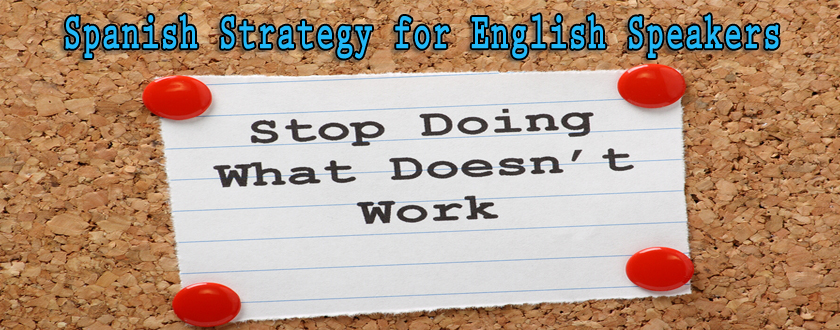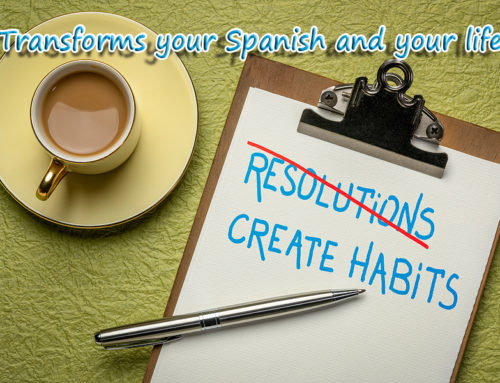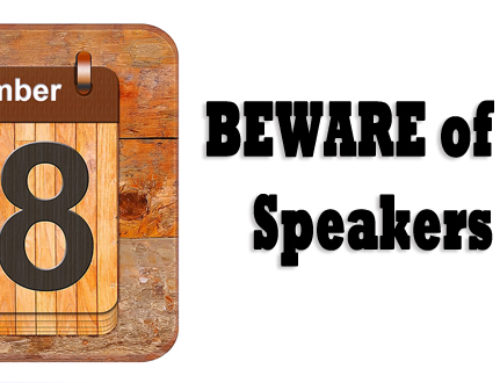
English speakers face two distinct parts of the Spanish language.
One part is very easy and natural to use. The other isn’t intuitive to English speakers.
Guess which part of Spanish the traditional textbooks start with?
That’s right, the textbooks start with the Spanish that is hard for English speakers to grasp.
There’s a heavy focus on what works differently in Spanish compared to English.
Yet the differences they focus on are often trivial.
Worse, the attention on what’s different has a stifling effect on your communication.
Instead of speaking freely, naturally and without inhibition, you start worrying about making errors.
Alternativamente, you can leapfrog the trivia, jump over the minutiae and forget the analysis of grammar rules. You can start speaking Spanish almost instantly by flipping things around.
Instead of putting all your attention on the differences, you can start with the similarities.
There are frequently used Spanish patterns that are just like English patterns. They make speaking Spanish easy and they allow you to say a lot with a little.
Here are two of mis favoritos.
Ejemplo numero uno: Just like English, you can talk about the future in Spanish by saying I am going to, which in Spanish is, voy a.
voy a comer.
I am going to eat.
voy a invitar a mi profesor a la fiesta.
I am going to invite my teacher to the party.
voy a visitar a mi amigo mañana.
I am going to visit my friend tomorrow.
Ejemplo numero dos: As in English, there’s also a pattern in Spanish for speaking about something that you just did. In English we say, “I just + (verb)” while in Spanish you say, acabo de + (verbo).
It works like this:
Acabo de comer.
I just ate.
Acabo de hablar con mi amigo.
I just spoke with my friend.
Acabo de aprender a hablar del futuro en español.
I just learned to speak about the future in Spanish.
Acabo de aprender mas español con Marcus.
I just learned more Spanish with Marcus.
Can you see how simple patterns make speaking Spanish easier?
The speak-to-learn format on the video makes it very easy to speak with these patterns right away.
Hay algo mas que quiero decirte. (There is something more that I want to tell you.)
It doesn’t take long before you can start stacking these communication patterns.
Then your Spanish takes off.
No voy a comer ahora porque acabo de hacer ejercicio.
I am not going to eat now because I just did exercise.
Acabo de aprender mas español que voy a usar mañana.
I just learned more Spanish that I am going to use tomorrow
Your first easy step is to speak with the patterns on the video below, just click the play button to get started.
You can get 68 more videos like the one above by clicking here.









Keep it simple, definitely does with this man marcos, cheers
thankyou its great
hello Marcus,
Let met first introduce myself,
I,m a dutch lady and my age is 71 almost.
Me and my hussband and i use to stay in Spain each winter for 3 month.
But my english is just what i know from school so its hard for my to understand everything you write and say in englsh.
Even that i like to learn spanish the way you do because its so common and natural.!
Thanks for learning my two languages:Enlish and Spanish. It is just for fun but i like it!
wishing you a good weekend and thanks for your lessons,
Babs Mulder
Can you use poco de for algo de?
You can but “algo de” is more common in this context.
So enjoying preliminary lessons . Taking them slowly to be ready for full course.
Excellente méthode pour un Français anglophone !
Je recommande à mes élèves.
DavidR
excellent system…..thankyou Amigos
Very good I feel that I will start studing my lessons soon.
It is a fantastic way to learn a language in opposition to all school systems . Bravo
You have helped me speak Spanish with a few locals. Fantástica. Muchas gracias.
thanks Marcus, this is a great help for me, brilliant. Just concentrating on the first video at this time,
Really helpful
I really like and I am enjoying this program.
Thanks Marcus
muy bien mi amigo
Oh that was a lot of fun and so easy. I am nearly at the end of Shortcut to Spanish 1 so I´m going to take up the Synergy Spanish very soon. Your lessons are so enjoyable Marcus and your methods help me to make sense of things. Thank you so much!
I found it fun.,because with the printed sentence I could follow and do the translation without forgetting the sequenc of the given sentence
Gracias Marcos y su amigo por esta lección maravilloso. Aprendo mucho con estas lecciones. Apprendo mucho mas español mas rápido. Mi esposo es Mexicano y está feliz que puedo hablar mas español con él. No estoy segura si esto es correcto, pero pienso sé mas que antes de tomar esta clase.
Hi i am very happy with your videos and the other programs the problem with me is even my English are not good but I am trying thanks to you my mother languages is macedonian and I all so speak greek but I am trying to learn Spanish thanks to you
I love the videos specially with the written words underneath. Learning so much so quickly. Feel confident to speak spanish in October with the Spanish people in Alicanti. Thank you Marcus.
Would it be possible for someone to give me a call? It would be greatly appreciated, I do have questions.
Thank you very much
Jim
Acabo de terminar – Shortcut to Spanish Level 1 and I feel as I am ready to speak some Spanish…. anyway I am going to put my knowledge to the test on holiday in Spain in one week!!!!
Marcus I will let you know how I was……;))
Muy bien español que me gusta aprender. Es fácil.
Gracias, Marcus !
Irene
This is by far the easiest and most fun way to learn Spanish. No as intimidating as having lists of complicated verbs. Thank you Marcus. X X X
Interesting. It makes learning fun, and effective.
very good way to learn spanish!!
Of all the different programs and books I have tried, Synergy Spanish is the easiest and fastest program, including the Duolingo program that appears to be very popular.
Thanks